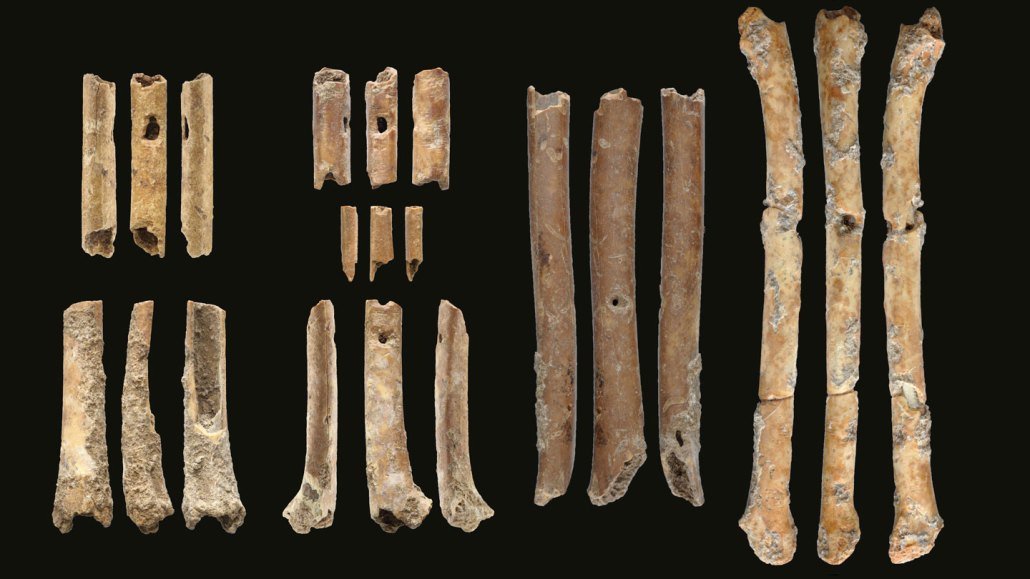These ancient flutes may have been used to lure falcons
The 12,000-year-old wind instruments made from bird bones are the oldest known from the Middle East

These seven flutes (each shown from three views) made from the bones of small waterfowl are the oldest known wind instruments from the Middle East, a new study says. The largest measures only about 63 millimeters, or 2.5 inches.
© Laurent Davin







